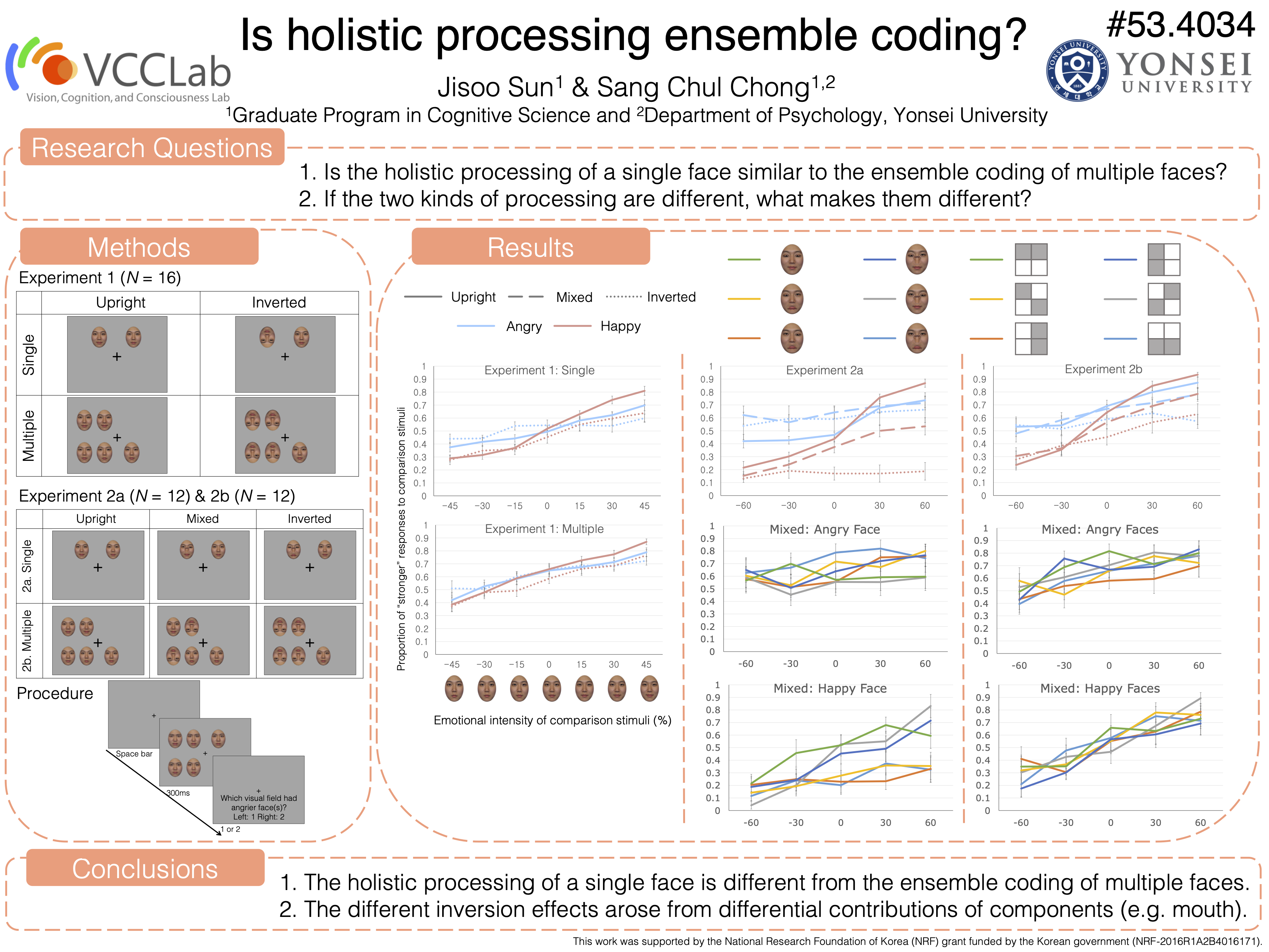Power of averaging: Noise reduction by ensemble coding of multiple faces
 Face perception is an important ability in social interaction. Holistic processing of a face enables us to understand facial attributes easily despite similarity of faces. Ensemble coding of multiple faces enables us to judge the characteristics of a crowd easily despite the limited capacity of the visual system. The current study investigated whether holistic processing of a face is different from ensemble coding of multiple faces and, if so, how. We tested how face inversion influenced both holistic processing and ensemble coding. Participants were asked to discriminate emotion intensities of either a single face or a crowd of faces (angry or happy face[s]). More important, face(s) or facial features were sometimes presented upside-down. We found that a face inversion effect was larger in discriminating individual emotion than in discriminating emotion in a crowd. As the number of inverted components increased, both discrimination abilities were more disrupted. The degree of disruption varied depending on different emotions and features in holistic processing, but it did not vary in ensemble coding. The inversion effect was weaker in ensemble coding than in holistic processing because noise produced by inversion might have cancelled out in averaging. Different inversion effects depending on different emotions and facial features were observed only in holistic processing because uneven contributions of facial features to individual emotion processing might have reduced the effectiveness of noise cancellation. Together, these results suggest that ensemble coding provides a powerful mechanism of noise cancellation involved with individual representation.
Face perception is an important ability in social interaction. Holistic processing of a face enables us to understand facial attributes easily despite similarity of faces. Ensemble coding of multiple faces enables us to judge the characteristics of a crowd easily despite the limited capacity of the visual system. The current study investigated whether holistic processing of a face is different from ensemble coding of multiple faces and, if so, how. We tested how face inversion influenced both holistic processing and ensemble coding. Participants were asked to discriminate emotion intensities of either a single face or a crowd of faces (angry or happy face[s]). More important, face(s) or facial features were sometimes presented upside-down. We found that a face inversion effect was larger in discriminating individual emotion than in discriminating emotion in a crowd. As the number of inverted components increased, both discrimination abilities were more disrupted. The degree of disruption varied depending on different emotions and features in holistic processing, but it did not vary in ensemble coding. The inversion effect was weaker in ensemble coding than in holistic processing because noise produced by inversion might have cancelled out in averaging. Different inversion effects depending on different emotions and facial features were observed only in holistic processing because uneven contributions of facial features to individual emotion processing might have reduced the effectiveness of noise cancellation. Together, these results suggest that ensemble coding provides a powerful mechanism of noise cancellation involved with individual representation.
